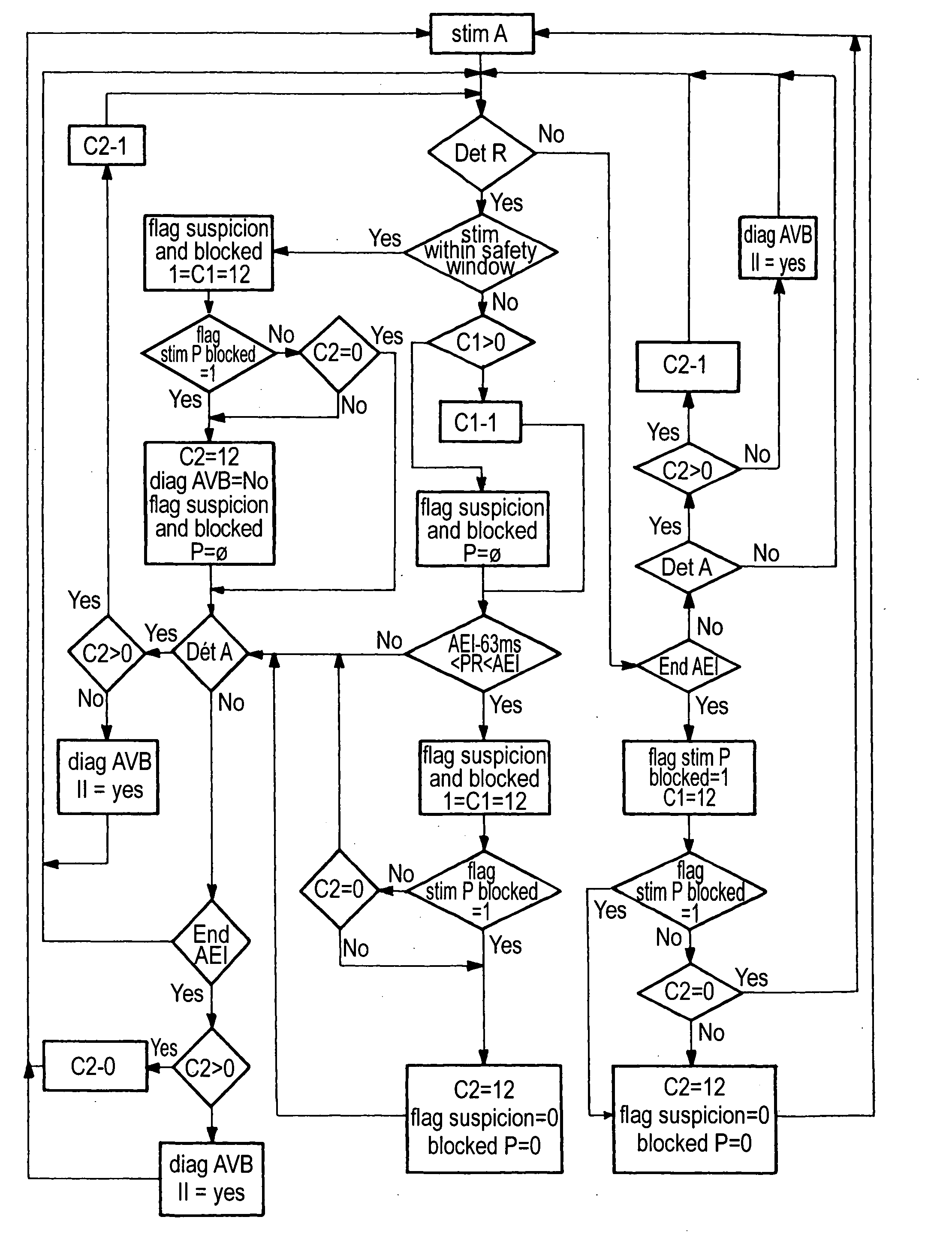Active implantable device medical such as pacemaker, defibrillator and/or cardiovertor of the AAI or AAI/DDD type
a technology of implantable medical devices and pacemakers, which is applied in the direction of heart stimulators, electrotherapy, therapy, etc., to achieve the effect of prolonging the atrial escape interval
- Summary
- Abstract
- Description
- Claims
- Application Information
AI Technical Summary
Benefits of technology
Problems solved by technology
Method used
Image
Examples
Embodiment Construction
[0029] The invention can be implemented in any known manner of circuitry, and more preferably by suitable programming of the control software of known cardiac pacemakers of the double chamber type integrating a DDD mode and an AAI mode with monitoring of the ventricular activity. However, as indicated above, and as it hereafter will be seen, certain aspects the invention can also apply to the cardiac pacemaker functioning only in AAI mode, by adjustment of the conditions of implementation of this mode, as may be reflected in software instructions.
[0030] The following definitions are used in the continuation of the description.
[0031] Detection P or DetP; sensing of a spontaneous activity having its origin in the atrium; it will be considered that there is indeed a detection P if the detection is not followed in a given delay, for example, a 31 ms period, by a ventricular detection (if not, one would be in a situation of “ventricular far-field” i.e., sensing in the atrium a remote d...
PUM
 Login to View More
Login to View More Abstract
Description
Claims
Application Information
 Login to View More
Login to View More - R&D
- Intellectual Property
- Life Sciences
- Materials
- Tech Scout
- Unparalleled Data Quality
- Higher Quality Content
- 60% Fewer Hallucinations
Browse by: Latest US Patents, China's latest patents, Technical Efficacy Thesaurus, Application Domain, Technology Topic, Popular Technical Reports.
© 2025 PatSnap. All rights reserved.Legal|Privacy policy|Modern Slavery Act Transparency Statement|Sitemap|About US| Contact US: help@patsnap.com



